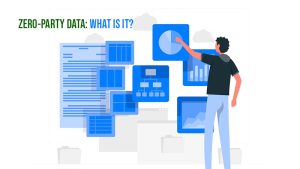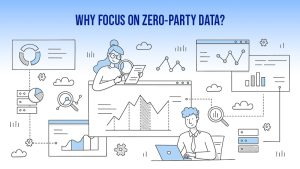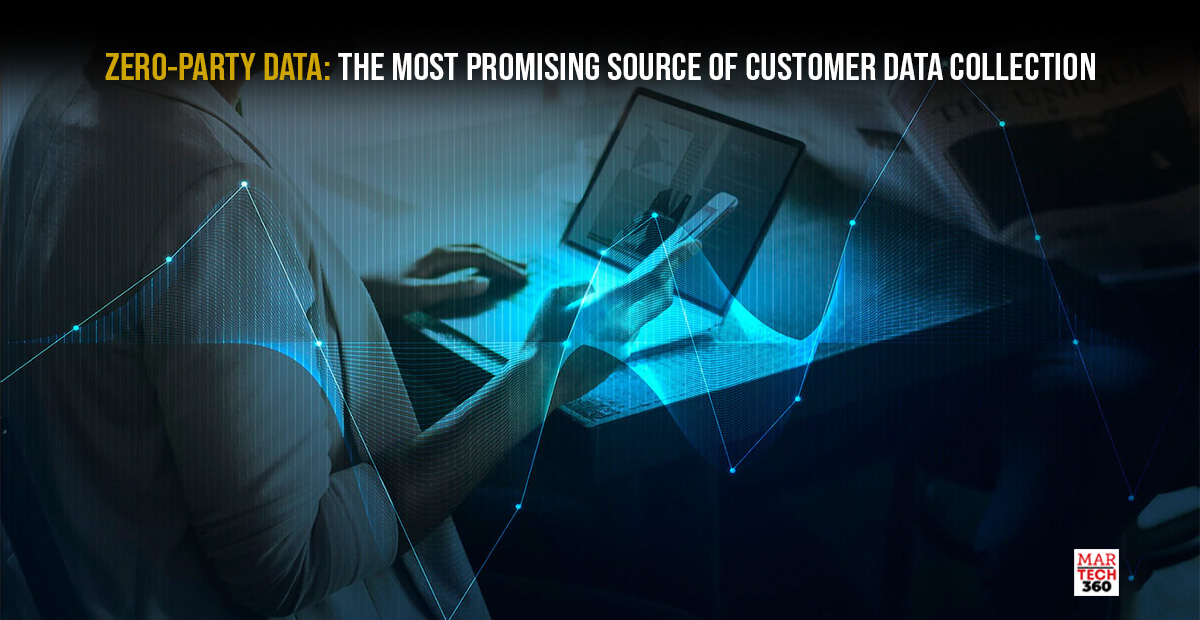The importance of zero-party data is growing as the internet becomes more and more privacy-focused. Zero-party data is information that a client voluntarily and knowingly gives to a business. Personal contexts, purchase intentions, preference center data, and how a customer wants to be remembered by the business can all be included. The term was initially used by Forrester Research, and since then, businesses all around the world have realized how crucial it is to acquire zero-party data.
Zero-party data is redefining how companies communicate with their online clientele, supporting high levels of consumer retention, engagement, and loyalty. In order to successfully traverse the future of online data collection, which is presently on the verge of considerable change, it is imperative to begin establishing the framework for collecting zero-party data.
Zero-party data: What is it?
 Let’s take a moment and examine some of the other data types that power personalized experiences before we define zero-party data.
Let’s take a moment and examine some of the other data types that power personalized experiences before we define zero-party data.
First-party Data:
Details about customers that businesses gather via their actions. This includes their interaction with a company’s website or mobile app, their past purchases, where they click, where they spend their time, how much money they spend, what they download, and how they interact with the site or app overall. It is a type of behavioral data used to analyze buyers’ intentions.
First-party behavioral data, including an individual’s site-wide, app-wide, and on-page behaviors, is a popular subject when discussing personalization. Along with the session context and the user’s interaction with personalized experiences, this also contains clicks and detailed behavior such as hovering, scrolling, and active time spent. You can discover insightful aspects of a person’s interests and intent via first-party data. First-party data also includes transactional information, such as information from purchases and downloads.
Second-party Data:
Details about first-party data belonging to another organization that you have been given permission to use and have purchased from the company.
Third-party Data:
Third-party data is used in personalization and is typically made up of demographic and firmographic information, buying signals (such as being in the market for a new home or piece of software), and additional data from CRM, POS, and call center systems. Third-party data is gathered or purchased from websites and sources other than your own.
Zero-party data:
The definition of Zero-party data is the collection of information that consumers have willingly provided via survey, poll, or filling out any form on your website; these are the facts that your client wants you to know, and without being invasive, you have full insight into what they want.
Simply put, information that customers voluntarily and deliberately give to companies through pop-up windows, surveys, and other interactions is known as zero-party data. Contact details, shopping preferences, and demographic data are commonly included in this kind of data. Customers’ concerns about how businesses utilize the information they unintentionally provide them when they sign up for services are growing.
Why focus on zero-party data?
 Using it is like striking gold. Customers that trust you enough will give you real-time and useful data, so you don’t need to guess what they want. In this instance, Zero-party data is also addressing the issue of client privacy, as businesses are obtaining information straight from customers. Customers voluntarily give information about themselves and confirm their intentions, which enables and promotes personalized service.
Using it is like striking gold. Customers that trust you enough will give you real-time and useful data, so you don’t need to guess what they want. In this instance, Zero-party data is also addressing the issue of client privacy, as businesses are obtaining information straight from customers. Customers voluntarily give information about themselves and confirm their intentions, which enables and promotes personalized service.
With zero-party data, brands are reducing their reliance on third-party ads dramatically and developing lasting connections based on personalization and trust. Knowing each customer’s preferences, needs, and pain areas is an important part of developing relationships with them. This goes beyond simply gathering their phone numbers and email addresses.
Based on a study on consumer behavior, 71% of consumers are actually willing to share this information with marketers in exchange for personalized recommendations. The use of zero-party data has numerous advantages. The obvious benefit is that it enables businesses to design highly individualized marketing strategies for their clients.
Brands are able to customize their email, SMS, and owned channels with even greater sophistication than they were able to do before on ads by gathering this highly valuable zero-party data and creating their own databases.
Technologies that enable zero-party data effectively
-
CIAM Software:
The software for customer identification and access management (CIAM) enables users to register and log in while securely identifying themselves. It enables businesses to quickly and widely implement the screen sets needed to generate the preference inquiries. Brands can link the zero-party data they gather to the first-party, permission-based profile of their customers via CIAM.
-
Customer data platforms:
By linking other data sources, customer data platforms (CDPs) build upon these profiles to produce a comprehensive view of customers from throughout the company. Additionally, CDPs reveal insights—like a customer’s purchasing preferences—and coordinate this context with interaction tools. Benefits can be obtained through touchpoints in marketing, business, sales, and customer service.
-
Solutions for enterprise consent and preference management:
It makes sure that the relevant consent agreements are in place for the data that brands obtain. When companies collect, store, and use customer data, including zero-party data, they create an audit trail to ensure that they are in compliance with local data privacy rules. They also give companies the ability to offer self-service online portals for customers to change their communication preferences, a significant category of zero-party data.
Zero-party data in a cookieless world
 It is the information that a customer voluntarily chooses to share with a company in an effort to improve their user experience. The future is zero-party data, and organizations can fill the void left by third-party cookies by putting in place a well-organized and comprehensive zero-party data gathering strategy. Many people consider this data type to be one of the most promising methods of data gathering in the cookie-less era.
It is the information that a customer voluntarily chooses to share with a company in an effort to improve their user experience. The future is zero-party data, and organizations can fill the void left by third-party cookies by putting in place a well-organized and comprehensive zero-party data gathering strategy. Many people consider this data type to be one of the most promising methods of data gathering in the cookie-less era.
First-party data, which includes name, gender, date of birth, and address, is often requested from customers in order to complete a transaction or make use of a service. The key difference between first-party data and zero-party data is this.
Summing Up
Zero-party data, when requested selectively by your clients and intelligently included on your platform, can significantly enhance the way you connect with your customers. It creates a situation where both parties involved can benefit.
It creates a clear relationships between customers and brands since it is unambiguous. As we learn more about these linkages, they will develop and change throughout time. You may respect your clients’ privacy concerns by using Zero-party data. Collecting zero-party data is a wise choice for every modern marketer. The only catch is that, as a marketer, you must actively urge your target audience to enter their personal information into the zero-party data collecting box.
In order to exceed customer expectations with your personalization efforts, as a marketer you will have access to the priceless data that your customers voluntarily share with you. There’s no need to overwhelm them with ever-more preference inquiries. Marketers need to keep in mind that transparency with customers is key. Zero-party data collection offers businesses a genuine chance to run more successful campaigns by gathering data directly from the source while also increasing transparency and trust among their audience.



Comments are closed.